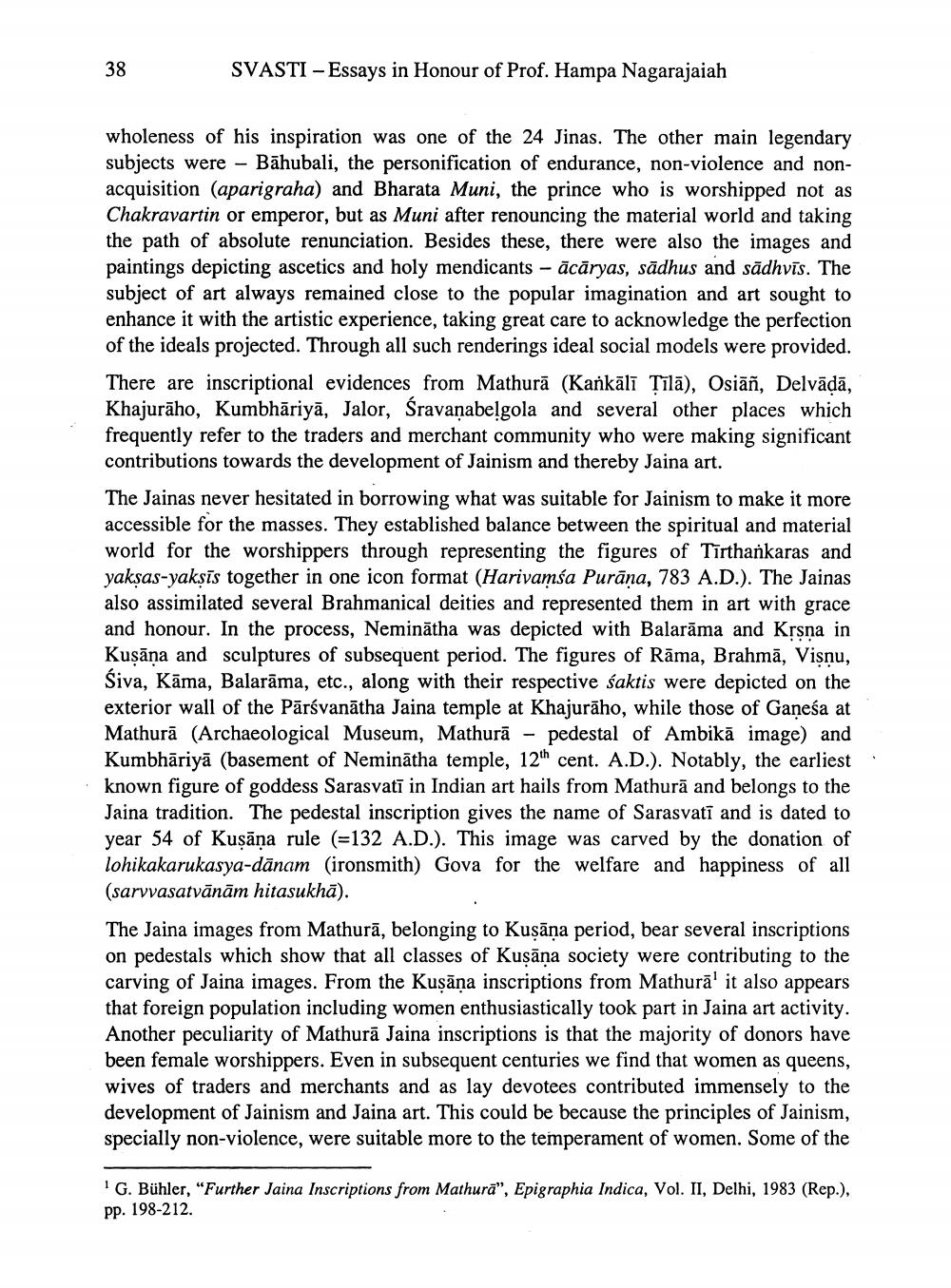________________
38
SVASTI Essays in Honour of Prof. Hampa Nagarajaiah
wholeness of his inspiration was one of the 24 Jinas. The other main legendary subjects were Bahubali, the personification of endurance, non-violence and nonacquisition (aparigraha) and Bharata Muni, the prince who is worshipped not as Chakravartin or emperor, but as Muni after renouncing the material world and taking the path of absolute renunciation. Besides these, there were also the images and paintings depicting ascetics and holy mendicants - ācāryas, sädhus and sädhvis. The subject of art always remained close to the popular imagination and art sought to enhance it with the artistic experience, taking great care to acknowledge the perfection of the ideals projected. Through all such renderings ideal social models were provided. There are inscriptional evidences from Mathură (Kañkālī Țīlā), Osian, Delvāḍā, Khajuraho, Kumbhäriyä, Jalor, Śravanabelgola and several other places which frequently refer to the traders and merchant community who were making significant contributions towards the development of Jainism and thereby Jaina art.
The Jainas never hesitated in borrowing what was suitable for Jainism to make it more accessible for the masses. They established balance between the spiritual and material world for the worshippers through representing the figures of Tirthankaras and yakṣas-yakṣis together in one icon format (Harivamsa Purana, 783 A.D.). The Jainas also assimilated several Brahmanical deities and represented them in art with grace and honour. In the process, Neminatha was depicted with Balarama and Kṛṣṇa in Kuṣaṇa and sculptures of subsequent period. The figures of Rāma, Brahmā, Viṣṇu, Śiva, Kāma, Balarama, etc., along with their respective śaktis were depicted on the exterior wall of the Pärsvanatha Jaina temple at Khajuraho, while those of Ganesa at Mathura (Archaeological Museum, Mathurā - pedestal of Ambika image) and Kumbhāriyā (basement of Neminatha temple, 12th cent. A.D.). Notably, the earliest known figure of goddess Sarasvati in Indian art hails from Mathura and belongs to the Jaina tradition. The pedestal inscription gives the name of Sarasvati and is dated to year 54 of Kuṣaṇa rule (=132 A.D.). This image was carved by the donation of lohikakarukasya-dänam (ironsmith) Gova for the welfare and happiness of all (sarvvasatvānām hitasukhā).
The Jaina images from Mathura, belonging to Kuṣāṇa period, bear several inscriptions on pedestals which show that all classes of Kuṣāna society were contributing to the carving of Jaina images. From the Kuṣāṇa inscriptions from Mathura' it also appears that foreign population including women enthusiastically took part in Jaina art activity. Another peculiarity of Mathura Jaina inscriptions is that the majority of donors have been female worshippers. Even in subsequent centuries we find that women as queens, wives of traders and merchants and as lay devotees contributed immensely to the development of Jainism and Jaina art. This could be because the principles of Jainism, specially non-violence, were suitable more to the temperament of women. Some of the
1G. Bühler, "Further Jaina Inscriptions from Mathura", Epigraphia Indica, Vol. II, Delhi, 1983 (Rep.), pp. 198-212.




